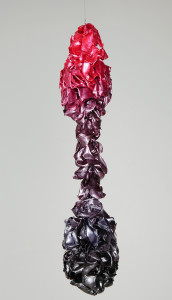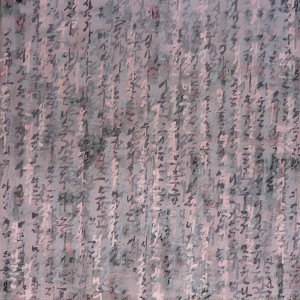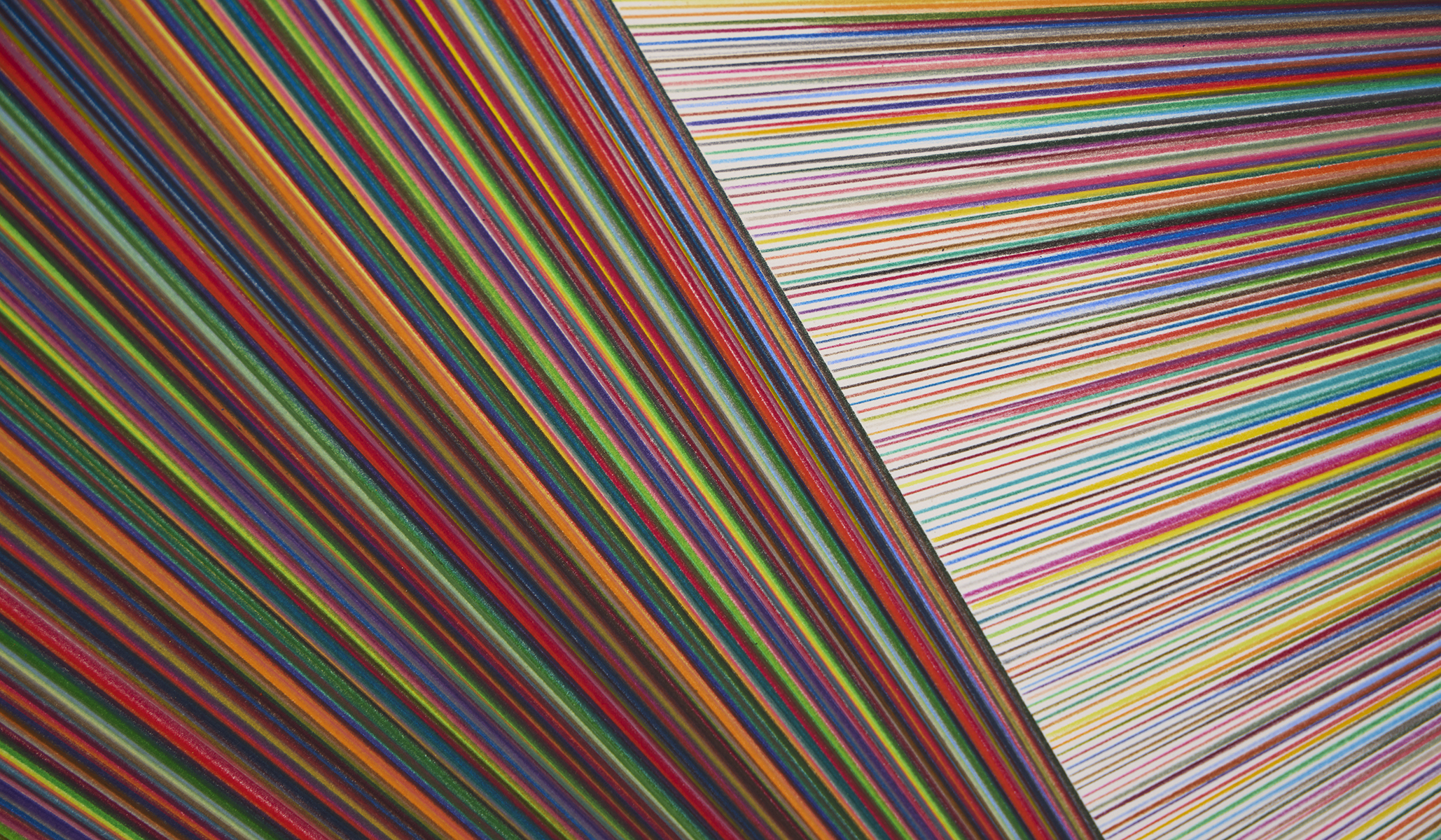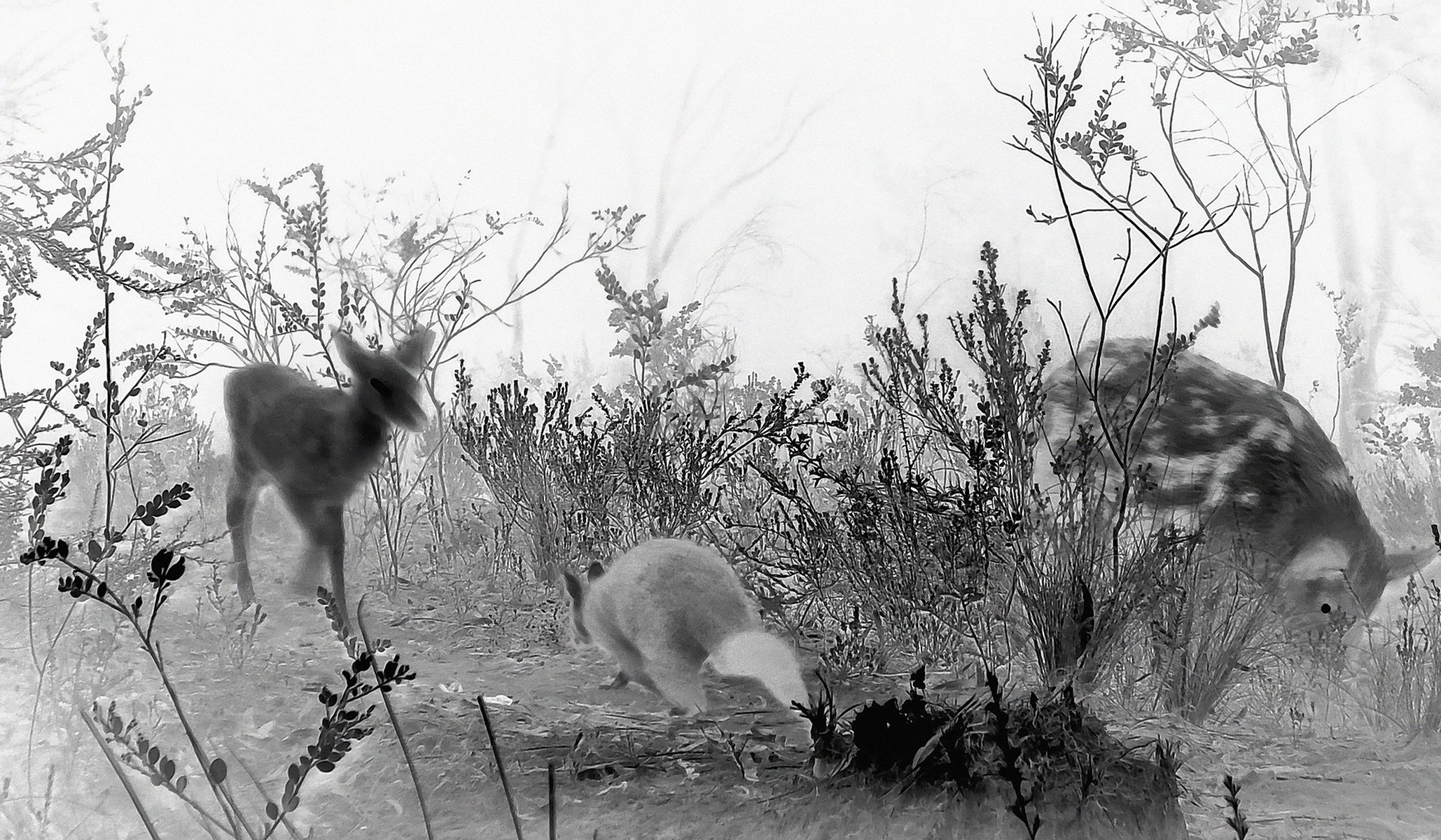Exhibition
Paint12 is the first of a series of annual exhibitions that will consider contemporary approaches to painting.
Paint is the medium common to the cryptic calligraphic mark making on silk, paper and canvas of Hyun-Hee Lee, it is the substance at the intersection (or separation) of design, art and industry where Giles Ryder conceives and creates his sleek and considered works of art; while Karena Keys exploits its viscosity and density to cast jewel-like objects or to saturate the fabric of her free, floating sculptures.
Karena Keys’s works respond to the expansion of the parameters of contemporary painting and its broader material and aesthetic possibilities. By using acrylic paint without the traditional supports of canvas or board, Karena Keys exploits those qualities of the medium – its fluidity and its intense colour, that bring it to life.
The material characteristics of paint that enable slumping and casting, tearing and stretching are manipulated by Keys to contend with paint in all its states of flux and to explore and realize the floating and dangling forms that she wants it to assume for both her vibrant, opalescent organic sculptures of solidified paint as in Rosetilliana fuschia and the ethereal floating forms of We’ll float #1 and #3, that are fashioned from paint-soaked softened tissue paper. Karena Keys intentionally suspends these objects to assert their independence from any internal or external supporting structural frameworks.


The art of Hyun-Hee Lee blurs the conventional distinction between writing and painting as she investigates how memory can be interpreted visually. Through painting and installation she illuminates very personal experiences that she has recorded over the years in letters, diaries or through spiritual contemplation and recall.
Hyun-Hee Lee’s daily practice, the ritual of writing prayers and diarising her aspirations, is vested in the Buddhist traditions of her Korean heritage. Because she is removed from her birth country, the works have special and poignant personal significance for her. Hyun-Hee Lee’s gestural glyphs are expressive of the sentiment and emotion of her memories. Her ‘scribbled’ markings are coded and private. To her the act is cathartic, to others it is a conundrum. Although not legible in linguistic terms – even to a speaker of Korean, they are personally meaningful marks; their colours, scale and gestures loaded with longing and expressive of remembered sentiment, emotion and desires.
Confession #2 is from her earliest approaches to ways of conveying memory through painting on canvas. The warm, soft grey-lilac palette and fluidity of gestures are a nostalgic acknowledgement of a period of tenderness and introspection. Months 1-17 acknowledge the meditative and spiritual act of writing onto small pieces of paper in accordance with Buddhist prayer ritual. The meaning is concealed and hidden within the myriad twisted papers that she masses on the surface of stretched canvas tablets that form the installation. (Hyun-Hee Lee was recently awarded the Coburn Prize for Emerging Artists in association with The Blake Prize for Spiritual Art 2012 for Homage, a version of this work combining Christian and Buddhist texts.)
Literal meaning is again obscured in the painted ‘texts’ on the wafting, pale silk banners of Hyun-Hee Lee’s poignant Filtered Memories. Calligraphic characters cut from lavender silk, some still trailing threads reminiscent of a prayer shawl, are stitched between layers of diaphanous Korean silk. These are suspended, along with other white silk panels overlaid with tiny cryptic glyphs in white paint. They are nostalgic versions of the cherished painted silk banners written with Buddhist sayings and given to Hyun-Hee as souvenirs by her father, a Korean master calligrapher. These sayings were instructive and meaningful in guiding her through daily life and times of adversity. The making of the installation is a private and ritualistic performance, paying respect to her father and to her Buddhist spiritualism.

Giles Ryder also explores notions of the visible and the invisible. Paint is the translucent vehicle in the form of pearlescent paint, glitter, transparent primer and holographic pigments employed for his abstract and geometrical Vectorial series of works. Applied to raw Latvian linen it melds the organic and the materials of manufacture and new technologies. Vector is Latin for ‘carrier’ and is applied in English usage in fields of maths, physics, science and technology. In the context of Giles Ryder’s works it is an apt term for both the materiality of paint and his art historical nod to the Futurists and their alignment of art, design and industry.
Giles Ryder spent six years working as an industrial painter on the Story Bridge in Brisbane – an intriguing precursor to his later practical and philosophical approach to his visual arts practice where he translates the stuff of industry and trades into art and the materials of art.
Barbara Dowse
Curator



